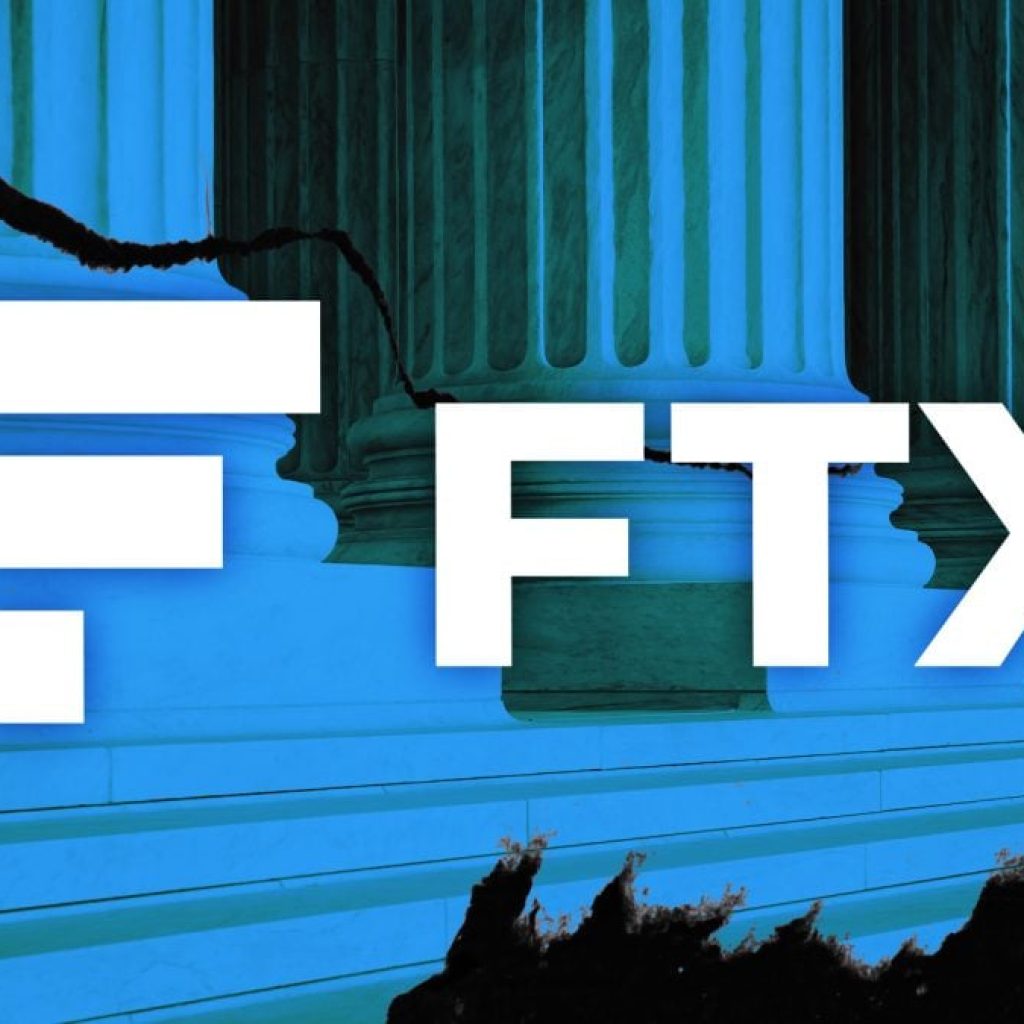Bitcoin (BTC) dipped below the $64,000 mark on Thursday as sellers pushed the price to a low of $62,304. However, BTC was able to recover from this level as buyers propped up the price, eventually making it back above $65,000 to settle just below the 20-day SMA at $65,312.
The world’s largest cryptocurrency has been consolidating over the past few weeks, having recovered from a low of $53,591, and is trading in a wide range. Investors are hopeful a trigger can push BTC to reach a new all-time high later this year.
Whales Added $5.4 Billion Worth Of BTC In July
In a display of overwhelming confidence in Bitcoin (BTC), large holders significantly boosted their BTC stash at an unprecedented pace in July, capitalizing on market volatility and buying the dip. Large BTC holders are addresses holding at least 0.1% of BTC’s circulating supply. According to data from IntoTheBlock, these addresses added over 84,000 BTC worth over $5.4 billion at current prices in July. This is the most significant addition of BTC in a single month since October 2014. The accumulation of BTC was characterized by whales buying the dip in early July, with brief pauses when BTC set off on its recovery to $69,000.
The accumulation of BTC indicates a strong belief in its long-term prospects. Traders are optimistic that the cryptocurrency’s prolonged consolidation phase, between $50,000 and $70,000, will end with a bullish breakout, which could drive the price beyond $100,000. According to Jag Kooner, the head of derivatives at Bitfinex, a rate cut in September will provide a sense of bullishness and increase liquidity in the market, which will be a positive development for BTC and other cryptocurrencies.
“A rate cut in September would provide a sense of bullishness and could generally increase liquidity in the market, which will be positive for Bitcoin and other cryptocurrencies as investors seek higher returns outside traditional assets. This could lead to upward pressure on Bitcoin’s price and increased ETF inflows as investors look to capitalize on a more favorable environment for risk assets.”
MicroStrategy Continues Adding To BTC Stockpile
One such company is MicroStrategy, which has continued adding to its BTC stockpile. The firm added an additional 12,222 BTC in the second quarter of this year, bringing its total BTC holdings to a staggering 226,500 BTC, worth almost $15 billion at current prices. However, the company also disclosed in its Q2 earnings call that it posted losses of $5.74 per share on a quarterly revenue of $111.4 million. This is a decline of $7% year-over-year. Microstrategy disclosed that its total BTC holdings were acquired at a cost of $8.5 billion, at an average price of $36,821 per BTC.
Bitcoin (BTC) Price Analysis
Bitcoin (BTC) has continued to drop this week despite seeing a marginal uptick on Thursday. The week began with BTC making a strong push to $70,000. However, the price turned bearish almost immediately after reaching the level, thanks to significant selling pressure at higher levels. With bears active, BTC fell back in the red and dropped by 2.12%, settling at $66,810. BTC’s drop continued on Tuesday with a 0.83% fall. Bearish sentiment intensified on Wednesday as BTC slipped below the 20-day SMA and settled at $64,671, losing the crucial $65,000 level in the process.
Source: TradingView
Bears attempted to drive BTC to $60,000 on Thursday as the price dipped to a day low of $62,304. However, thanks to strong demand at lower levels, BTC recovered and reclaimed the $65,000 level, posting an increase of 0.99% to move to $65,312. However, the current session sees sellers back in control, with the price down by 1.70%. BTC is trading below $64,000. Should BTC dip below this level, we could see a drop to $61,000, and the 200-day SMA could act as a dynamic level of support. However, if bulls can keep the price above the 200-day SMA, it can be considered a bullish trend. With traders expected to buy the dip, we could see a recovery.
However, one important factor to consider is the expiration of $3 billion worth of Bitcoin (BTC) and Ethereum (ETH) options, which could significantly impact the markets. The event is expected to add to market volatility, although analysts, based on historical trends, expect the current quarter to be more optimistic.
Ethereum (ETH) Price Analysis
Ethereum (ETH) remains firmly in the red as the price nears $3,100, a crucial support level. Bears will attempt to push the price below this level, with markets spooked thanks to significant outflows from spot Ethereum ETFs and a potential whale dump after a wallet moved 19,500 ETH to Binance over the past few days. ETH is currently trading just above its $3,100 support level, with the cryptocurrency’s price drop triggering almost $78 million in liquidations. The long/short ratio has also declined, indicating that most traders expect a further drop.
As we can see from the price chart, ETH started the week on a positive note, rising by 1.42% on Monday as buyers made a strong push towards $3,500. However, they could not do so, and ETH fell back in the red on Tuesday, dropping by 1.17% to $3,280. Buyers attempted a recovery on Wednesday but were thwarted as sellers took control and pushed ETH down by 1.45% to $3,232. Significant selling pressure on Thursday pushed ETH to a day low of $3,079, but demand at lower levels pushed the price back up. ETH eventually settled at $3,202, down by 0.95%. The current session sees ETH down by 1.61% as sellers look to breach $3,100.
Source: TradingView
If ETH dips below $3,000, the $2850 support level will be crucial. This level has been tested several times over the past few months and has always allowed the price to recover and prevent further declines. With the RSI approaching the oversold zone, we could see a recovery in the short term as ETH approaches the $3,000 mark. The price must consolidate above $3,200 if the bulls want to start a rally targeting $3,500.
Solana (SOL) Price Analysis
Solana’s (SOL) bearish week shows no signs of abating as the token continues to plummet. SOL had been incredibly bullish up to the current week, closing above $185 on Sunday. SOL started the week with a strong push towards $200, reaching a day high of $194 on Monday. However, its advance stalled at this level, with sellers active at higher levels. As a result, bulls lost steam, allowing sellers to take over and drive the price down by 1.30% to $182. Bearish sentiment also persisted on Tuesday, with SOL dropping by almost 2% to $175.25. SOL dropped by 4.18% on Wednesday after bears successfully thwarted a push towards $190, with the price eventually settling at $171.
Source: TradingView
Thursday saw SOL slip below the 20-day SMA as it encountered intense selling pressure, falling to a day low of $157. However, buyers could push the price back up, and SOL settled at $167.36. The current session sees SOL down by 3.26% and trading just above the $160 level. However, analysts expect a major rebound as it trades above the 50-day SMA and the 200-day SMA. If SOL drops below $160, it could go to $150 or as low as $120. A bounce from these levels could propel SOL towards $200.
Dogecoin (DOGE) Price Analysis
Dogecoin (DOGE) has dropped by over 10% during the past seven days as meme coin prices plummeted. As we can see in the price chart, DOGE has been in the red all week and has slipped below the 20, 50, and 200-day SMAs. The meme coin’s price has steadily declined since hitting $0.140 on July 21. The current week began with a drop of 1% after buyers failed to push above the 200-day SMA as DOGE closed at $0.128. A drop of 1.95% on Tuesday and a 3.42% drop on Wednesday saw the price slip below the 20 and 50-day SMAs and settle at $0.121. The price dipped below $0.120 on Thursday, hitting a low of $0.112 before recovering and settling at $0.119. The current session sees DOGE down by just over 3%, with analysts predicting further losses.
Source: TradingView
If we look at the bigger picture, the DOGE price chart reveals the asset is in a falling wedge pattern, generally a sign of a bullish reversal. With the price being squeezed between two descending but converging trendlines, a potential breakout could occur as the convergence point approaches. If the drop continues, we could see DOGE drop to $0.100.
Bitcoin Cash (BCH) Price Analysis
Bitcoin Cash (BCH) is down by almost 5% over the past 24 hours as sellers continue dominating the market, with the price slipping below $400. BCH had reached a high of $459 on Monday as it started the week on a bullish note, surging past the $450 price level. However, selling pressure at higher levels pushed the price back down as the price fell below $450 to settle at $439, an increase of over 5% over Sunday. Despite a strong start to the week, buyers lost momentum on Tuesday, resulting in a drop of 1.49%. Selling pressure intensified on Wednesday as BCH dipped below the 200-day SMA, reaching a low of $389. However, the price rebounded from this level as buyers pushed it back above $400. BCH eventually settled at $413, down by just 0.22%.
Source: TradingView
BCH is down 3.38% and trading at $399 in the current session. The price drop could be attributed to the most recent Mt. Gox repayments, with the trustee making significant repayments to trustees in BTC and BCH. The latest round of repayments was made on July 31.
Render (RNDR) Price Analysis
Render (RNDR) continues to drop despite being one of the blockchain ecosystem’s largest decentralized cloud GPU rendering platforms. The token is down almost 17% over the past week and 60% from its all-time high. As we can see from the price chart, RNDR has been in the red all week, with the price in a downward trend since the beginning of June. Technical indicators hint at a prolonged bearish phase for the asset, especially with the 50-day SMA crossing below the 200-day SMA.
Source: TradingView
On Wednesday, RNDR lost the crucial $6 level as sellers continued to drag the price lower. There is some support for the token at $5.40, but if this level is breached, the price could drop down to $3.60, where it will find support. With the RSI nearing the oversold zone, we could see a recovery in the short term, although the potential for further downside remains. RNDR trading volume has also registered a sharp drop in July, indicating a lack of buying interest at current prices.
SEI Price Analysis
SEI’s recent downturn has seen its price drop significantly, with the asset losing a key support level. SEI has been in the red since hitting a day high of $0.41 on July 22. By Monday, the price was down to $0.35, and it slipped below the 20 and 50-day SMAs on Tuesday, closing at $0.33. This drop also saw the price slip below a crucial support level. Selling pressure persisted over the week as the price dropped by almost 5% on Wednesday and a further 3.88% on Thursday to settle at $0.30. The current session sees SEI down by just over 4% and trading at $0.29.
Source: TradingView
With SEI trading below $0.30, should bearish pressure continue, the price could drop to $0.25 or even $0.20.
Disclaimer: This article is provided for informational purposes only. It is not offered or intended to be used as legal, tax, investment, financial, or other advice.





